.
8.45 MESZ
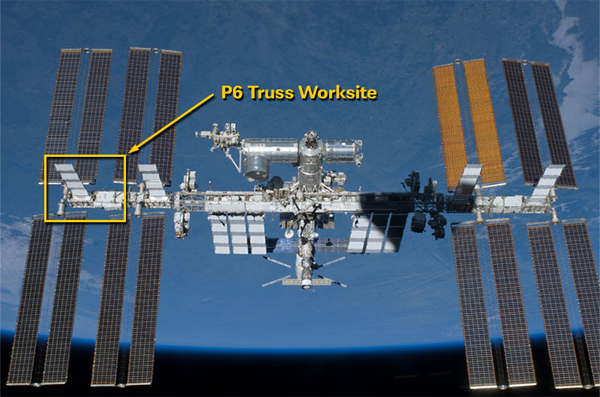
The International Space Station's port-six solar arrays and cooling radiator are highlighted in this graphic showing the worksite for an earlier leak bypass spacewalk. (Credit: NASA)
.
Flight controllers are monitoring an ammonia coolant leak in the International Space Station's left-side power truss, NASA officials said late Thursday.
The leak, apparently located in the outboard port-six (P6) solar array truss segment, was reported by the station crew around 11:30 a.m. EDT (GMT-4). Downlinked video, sources said, showed a stream of white flakes dissipating in the vacuum of space.
NASA officials said the crew was not in any danger.The leak is in the system used to cool electronics associated with solar array power channel 2B, one of eight fed by the station's huge solar panels. Ammonia flowing through a large radiator is used to carry away heat generated by the array's batteries and electrical systems.
The coolant system requires at least 40 pounds of ammonia to operate normally. Based on the observed leak rate, NASA said in a web update, the channel 2B coolant loop could drop below that level and shut down within 48 hours if nothing is done to resolve it.
In that case, the station's six-man crew would be forced to reconfigure the station's coolant loops, using a different loop to cool at least some of the channel 2B systems.
While the crew would lose redundancy in the cooling system, flight controllers do not believe any major systems would have to be shut down to reduce cooling requirements.
The station is equipped with spare parts for the coolant system and the U.S. astronauts are trained for possible spacewalk repair jobs. But as of this writing, it is not known whether a spacewalk might be required at some point or whether some other repair option might be implemented.
But a spacewalk would require two U.S. astronauts. At present, two U.S. astronauts, a Canadian flier and three Russians are aboard the outpost. But NASA astronaut Thomas Marshburn, Canadian space station commander Chris Hadfield and cosmonaut Roman Romanenko are scheduled to return to Earth late Monday U.S. time aboard a Russian Soyuz spacecraft.
"We don’t see anything technically that we can't overcome," astronaut Doug Wheelock radioed the crew from Houston. "But we are still getting our arms fully around that issue."
This is not the first time a leak has been observed in the channel 2B system.
A slight 1.5-pound-per-year leak in the channel 2B cooling system was first noticed in 2007. During a 2011 shuttle visit, two spacewalking astronauts added eight pounds of ammonia to the reservoir to boost it back up to a full 55 pounds. The plan at that time was to top off the system every four years or so to "feed the leak," replacing the lost ammonia as required.
But over the next few months, engineers saw the leak rate suddenly quadruple, either because something changed at the original leak site or, more likely, because another leak developed elsewhere in the system.
On the assumption that the leak was in the solar array 2B coolant radiator, astronauts Sunita Williams and Akihiko Hoshide staged a spacewalk Nov. 1, 2012, to reconfigure coolant lines and to deploy a spare radiator, isolating the section of the loop where the leak was suspected.
The system operated normally until Thursday when the crew reported the visible leak. Whether the latest problem is related to the earlier issue is not yet known.
The lion's share of the International Space Station's electrical power comes from four sets of dual-panel solar arrays, two on the right side of a 357-foot-long truss and two on the left side.
Each set of solar arrays features two 115-foot-long panels that extended in opposite directions. The Russian segment of the station taps into the U.S. power grid to supplement electricity generated by two relatively small solar panels on the Zvezda command module.
The two U.S. arrays at the far left end of the station's integrated power truss -- the port six, or P6 arrays -- feed power to electrical channels 2B and 4B. The P6 set of arrays, like its three counterparts, routes power from the solar panels directly into the station's electrical grid during daylight passes, at the same time charging dual sets of batteries that take over during orbital darkness.
Each power channel generates between 150 and 160 volts of direct current, but downstream equipment near the center of the power truss -- equipment that uses a separate cooling system -- steps that down to 125 volts DC for use by the station's internal systems.
To keep the power generation components cool, each of the four sets of arrays uses two independent coolant loops that circulate ammonia through cold plates to carry heat out to a single shared radiator that extends from each module. The photo-voltaic radiator weighs 1,650 pounds and is made up of seven panels measuring 6 feet by 11 feet.
The space station can operate without the full complement of cooling channels, but the total loss of a coolant loop would require a significant reconfiguration to prevent electrical systems on the affected loop from overheating.
.
Quelle: NASA, CBS
.
Update: 13.00 MESZ
The crew of the International Space Station (ISS) may soon take an unscheduled spacewalk to fix a coolant leak in its power system.
The ammonia coolant, which is currently leaking into space, is used to dissipate heat from the station's solar panels. Each of the four panels has an independent coolant system, which means the station will not be left without power if the problem persists.
NASA and its Russian counterpart Roscosmos are discussing a possible emergency spacewalk that the US crewmembers may have to take to fix the leak.
“They [NASA] have a serious problem, really serious. In situations like these we must make concessions as a partner,” Russia's ISS mission chief Vladimir Solovyev explained.
The problem does not pose a threat to the safety of the ISS crewmembers, NASA assured.
The ISS had a similar problem in November, which also required an emergency spacewalk to solve. The coolant was rerouted to a backup loop that had been in use in the early years of ISS development.
The loop affected this time is the same one that caused trouble last year, but it is not yet clear whether the location of the leak is the same.
The leak was discovered just days before the Expedition 35 crew is scheduled to return to Earth.
Quelle: Rusia Today
,
Update: 22.30 MESZ
Crew Preparing for Possible Spacewalk Saturday
Following Thursday's identification of an ammonia coolant leak outside the International Space Station, the Expedition 35 crew Friday began preparing for a possible spacewalk Saturday. Mission managers are discussing the information that was gathered overnight about the leak on the far left-side of the station's truss structure, called the P6 with P standing for port. A final decision on whether to go forward with a spacewalk is not expected until late tonight.
The crew is not in danger, and the station continues to operate normally otherwise. Work is underway to reroute power channels to maintain full operation of the systems normally controlled by the solar array that is cooled by the suspect loop.
Expedition 35's Chris Cassidy and Tom Marshburn began preparing for the possible spacewalk to inspect the area it appears the leak is originating from, and potentially make repairs to the leaking ammonia cooling loop. Station managers are meeting this morning and will meet again tonight to discuss procedures and timeline work for a spacewalk, if approved.
Working in the Quest airlock, astronauts Cassidy and Marshburn checked out the U.S. spacesuits they would wear if a spacewalk is approved, and Expedition 35 Commander Chris Hadfield began preparing to asssist as the “intravehicular” crewmember, or spacewalk choreographer.
Cassidy and Marshburn have each conducted three spacewalks, all on the STS-127 mission to the ISS in 2009. They collaborated on two of those spacewalks.
Late Thursday morning, the Expedition 35 crew reported seeing small white flakes floating away from an area of the station’s P6 truss structure. The crew used handheld cameras and Mission Control used external television cameras to gain additional imagery in an attempt to narrow down the leak’s location. The crew’s reports, along with imagery and data received by flight controllers in Mission Control in Houston, confirmed that the rate of the ammonia leaking from this section of the cooling system increased.
Ammonia is used to cool the station’s power channels that provide electricity to station systems. Each solar array has its own independent cooling loop. This ammonia loop is the same one that spacewalkers attempted to troubleshoot a leak on during a spacewalk on Nov. 1, 2012. It is not yet known whether this increased ammonia flow is from the same leak, which at the time was not visible. It is anticipated that the 2B power channel, which is one of eight power channels to supply electricity for station systems, will be depleted of ammonia coolant by late this morning and will be shut down.
.

Quelle: NASA
.
Update: 11.05.2013
Expedition 35 crew members Chris Cassidy and Tom Marshburn will go outside the station at around 8:15 a.m. EDT Saturday to inspect and possibly replace a pump controller box suspected of leaking ammonia coolant. The device contains the mechanical systems that drive the cooling functions for the station's port truss.
Live spacewalk coverage begins at 7 a.m. EDT on NASA TV.
.
Frams: NASA-TV-LIVE
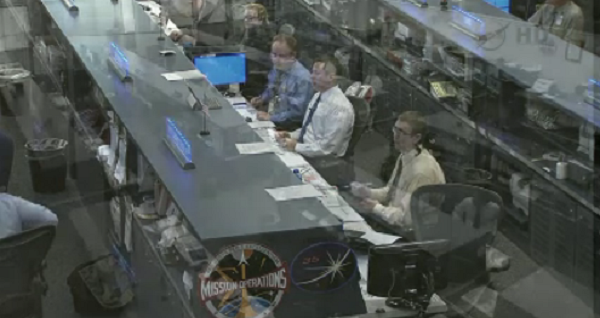
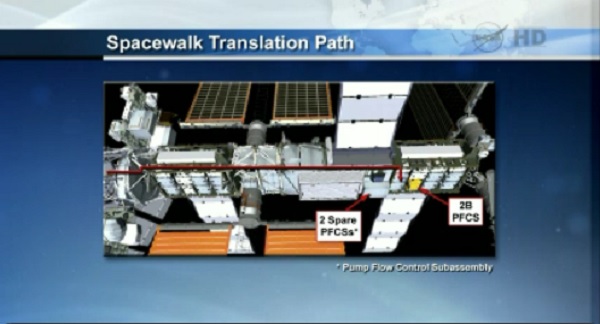
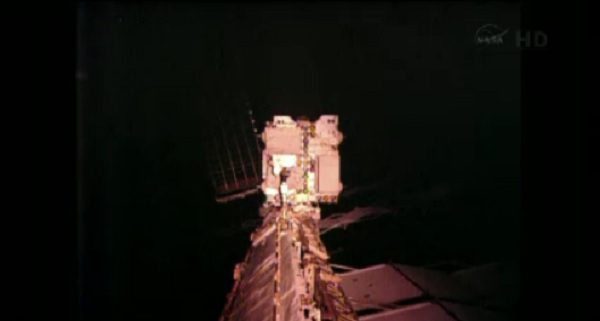
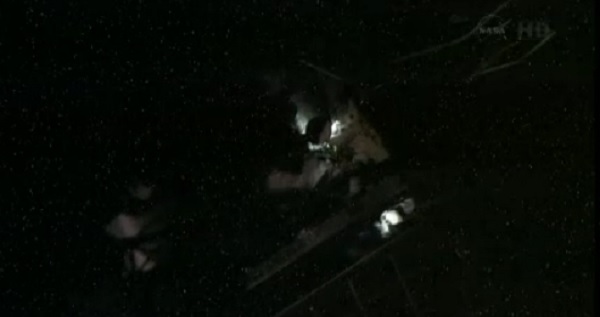
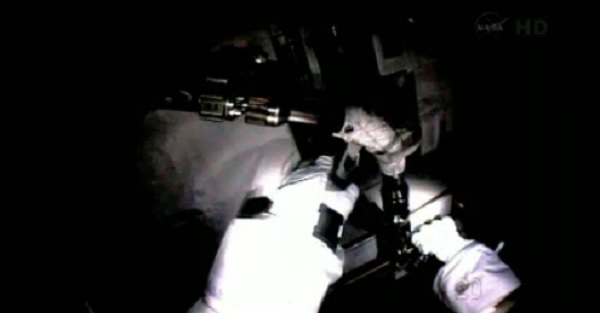
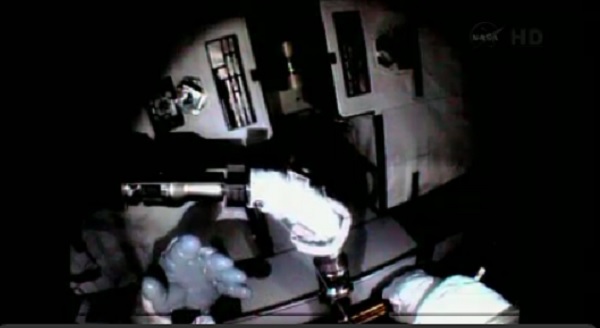
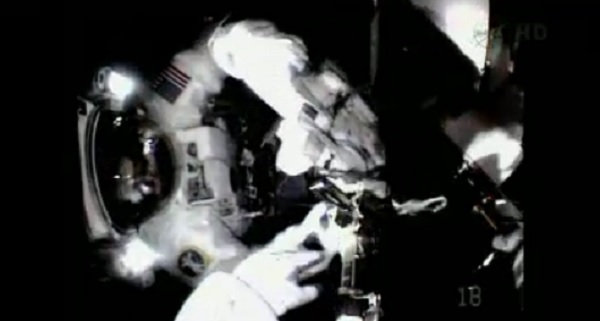





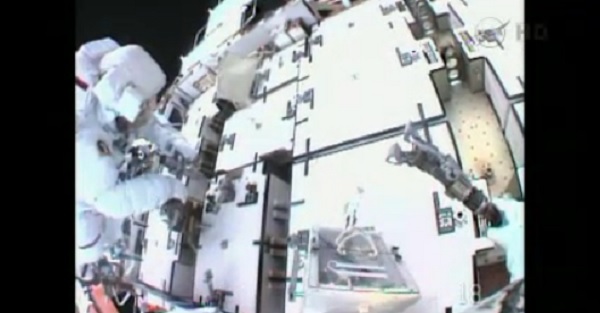

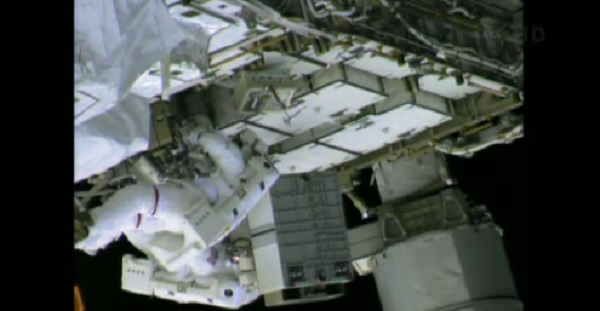
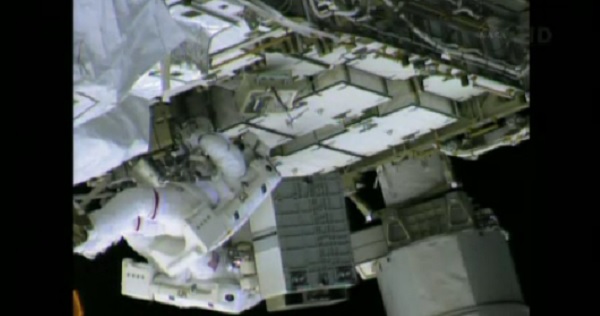
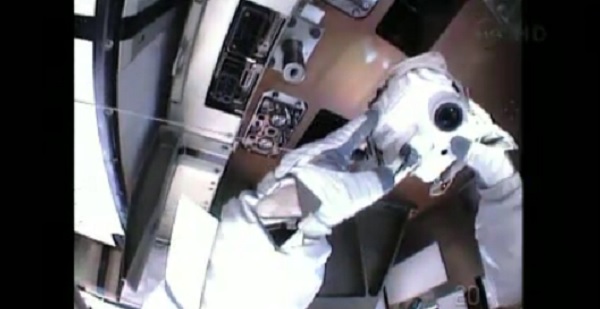
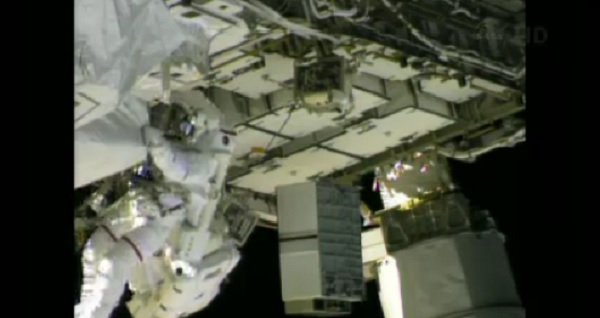
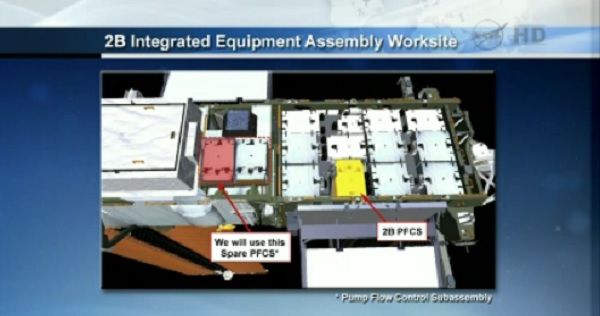
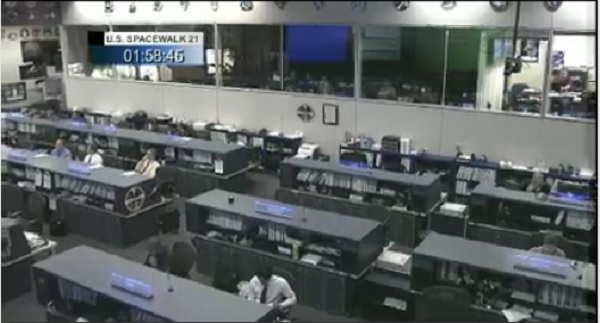
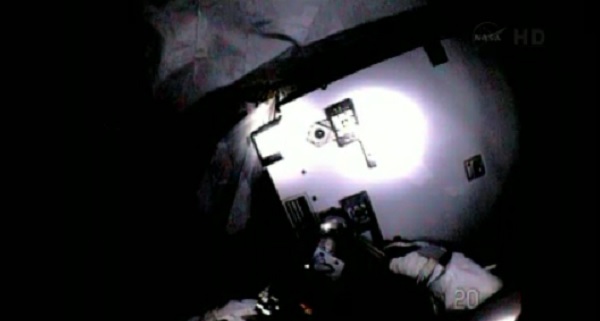
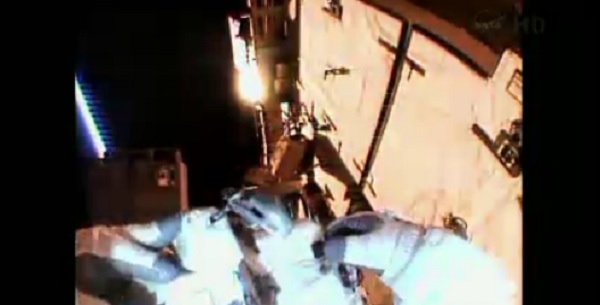
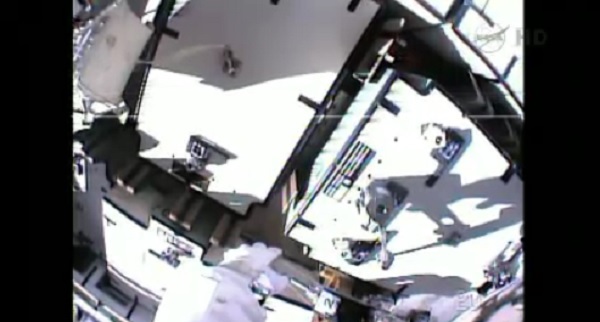
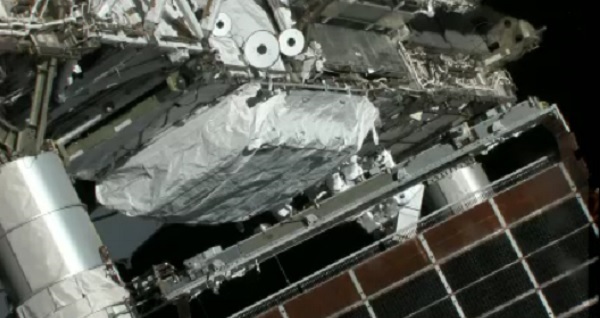
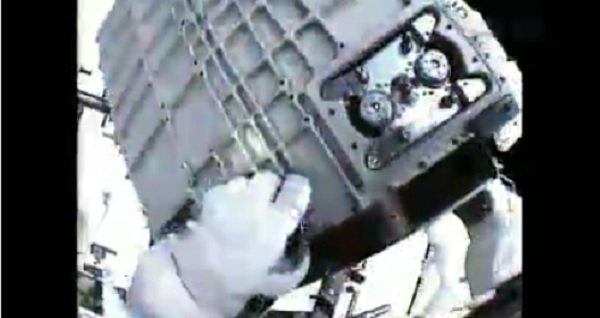
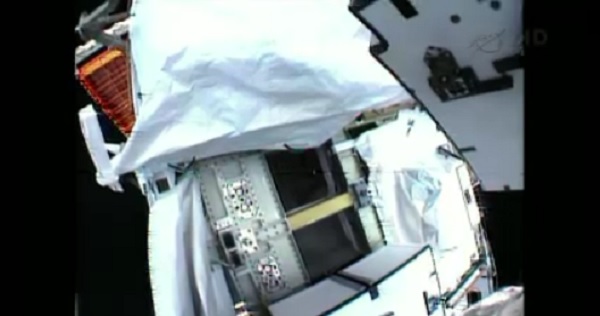

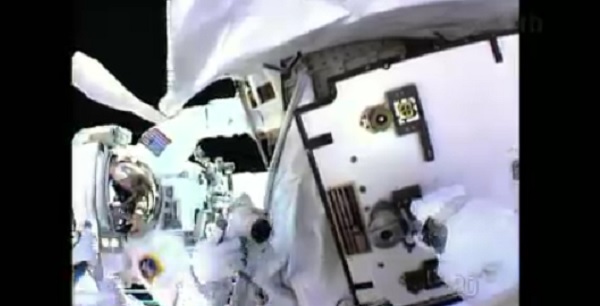
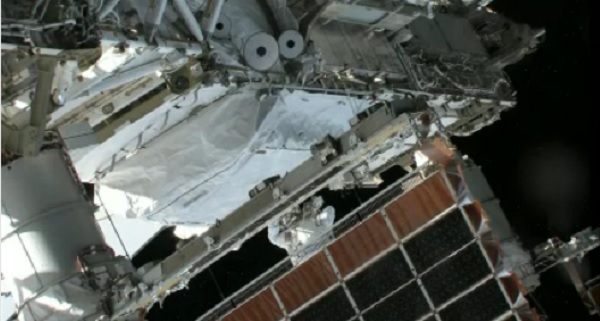
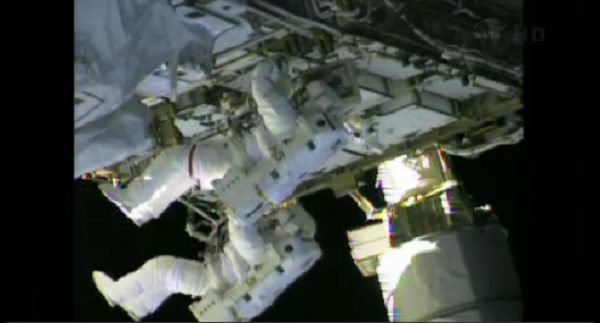
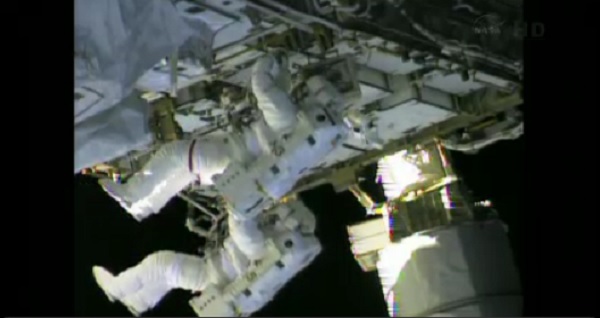
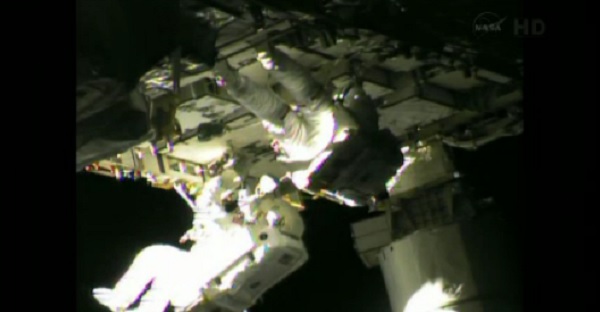
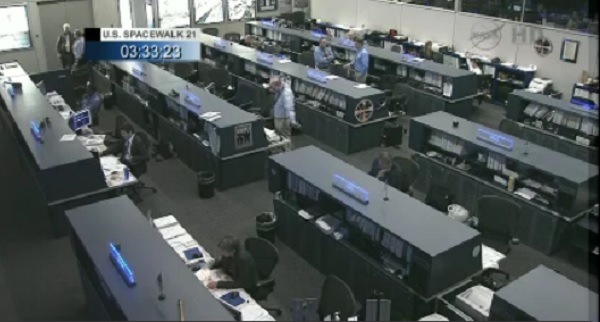
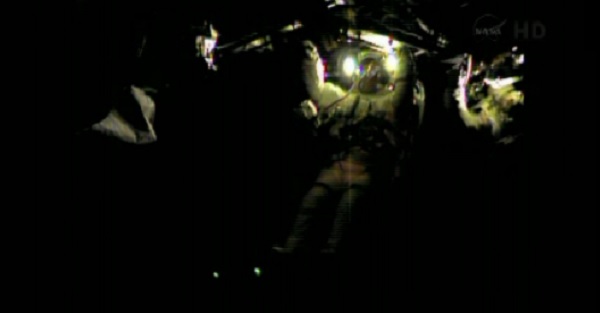
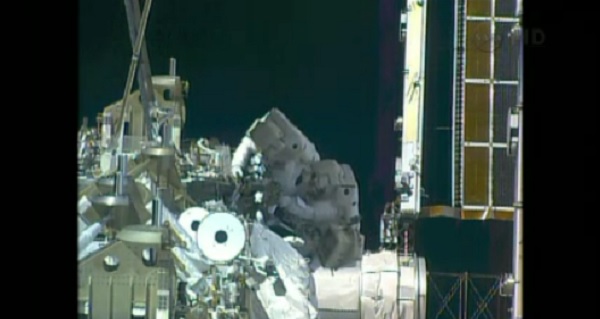
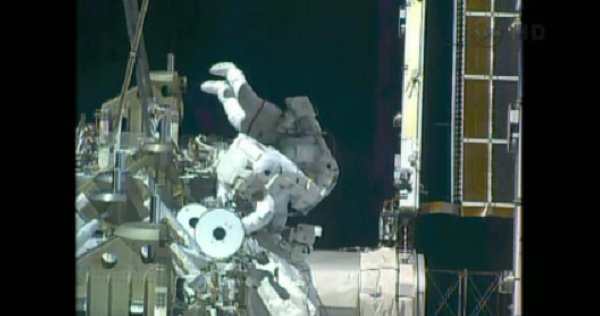
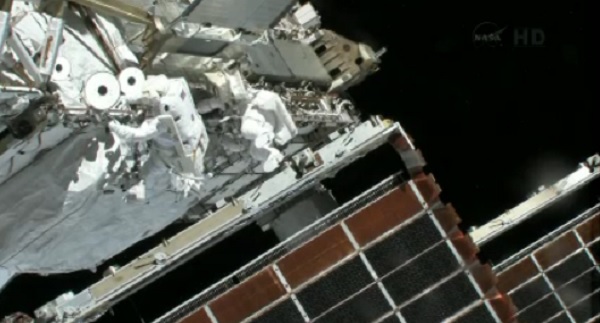

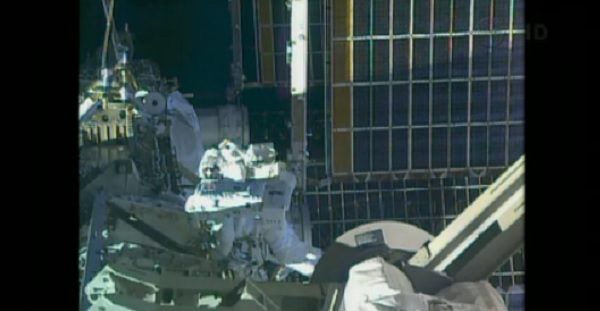
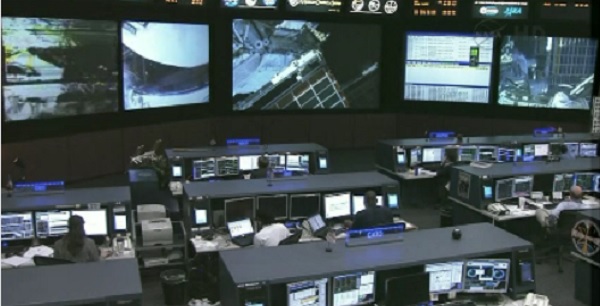
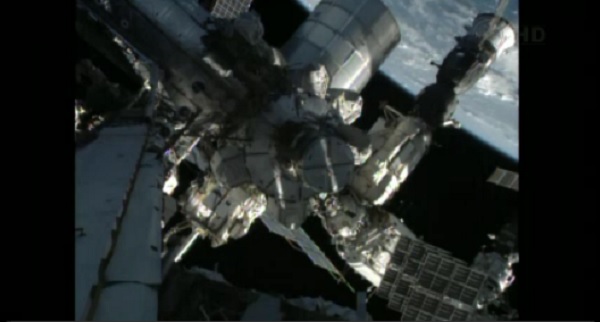
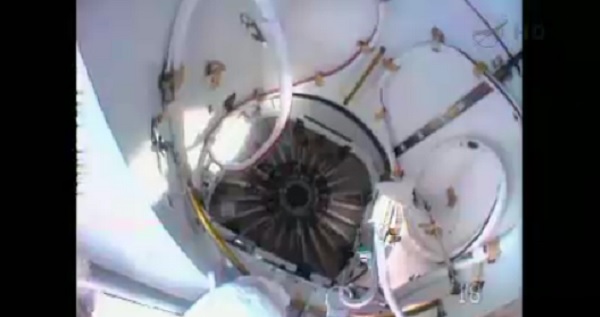
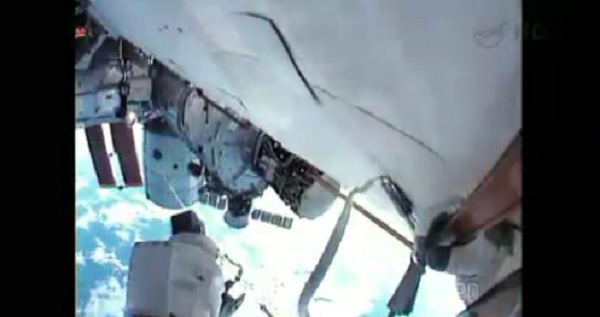
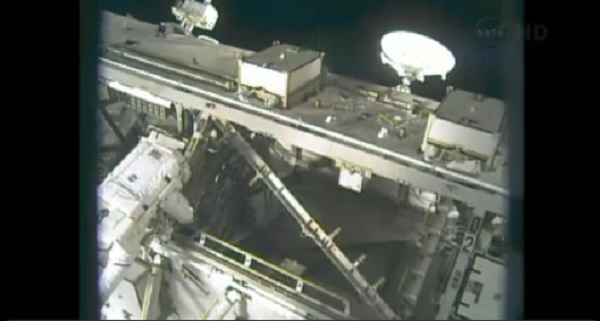
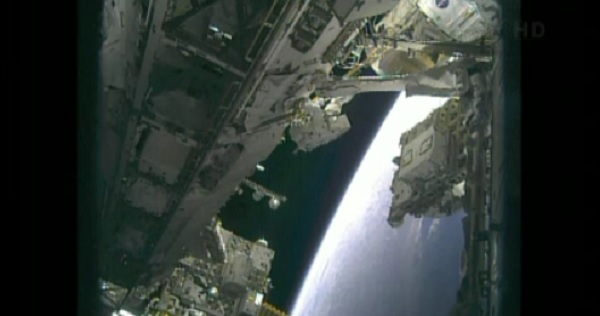
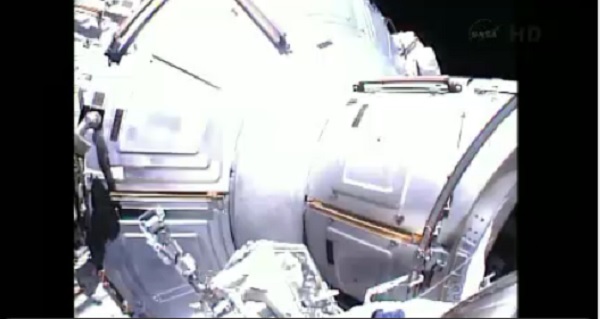
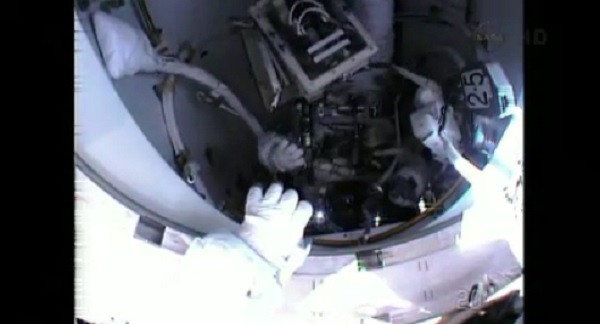
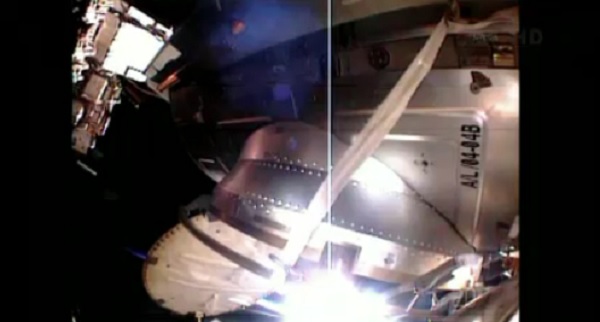

Spacewalking astronauts successfully replaced a 260-pound pump controller box on one of the electrical power generating units of the International Space Station Saturday morning, but won't know for some time if that fixed a leak of ammonia coolant. That leak had caused ground controllers to shut down the power unit linked to the leaking cooling loop, but the station itself is in no danger. It has enough power to operate normally from seven other power units.
Flight Engineers Chris Cassidy and Tom Marshburn completed their spacewalk at 1:14 p.m. CDT Saturday, five-and-a-half hours after they left the station's airlock. The walk meant moving some 150 feet away from the airlock, and the entire event was televised live on NASA TV. A press briefing is scheduled at 3:30 p.m. CDT.
The leak was found Thursday on the cooling unit mounted to one of the trusses that extend from the station and hold its solar arrays. Astronauts observed white flakes of ammonia like snowflakes floating from the area. The pump controller was weightless at the 230 mile altitude of the station.
